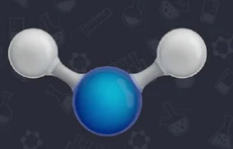New Non-Toxic Molecules for Alzheimer’s Treatment Developed
Scientists at the Agharkar Research Institute in Pune announced a breakthrough in Alzheimer’s disease treatment. They created new non-toxic molecules that could potentially change how we approach neurodegenerative diseases. This development comes at a critical time, as Alzheimer’s affects millions globally.
About Alzheimer’s Disease
Alzheimer’s disease is a progressive neurodegenerative disorder. It is the leading cause of dementia, affecting 60 to 70 percent of the 55 million people living with dementia worldwide. The disease is characterized by memory loss, cognitive decline, and changes in behaviour. The condition arises from an imbalance of hormones and neurotransmitters in the brain. A key neurotransmitter involved in memory and learning is acetylcholine. Its reduction is linked to the symptoms of Alzheimer’s.
Current Treatment Limitations
Existing treatments for Alzheimer’s primarily focus on symptom management. They often have side effects and do not address the underlying causes. There is an urgent need for new therapies that are both effective and safe.
New Molecules Developed
Researchers at the Agharkar Research Institute focused on creating novel molecules. They employed a rapid one-pot, three-component reaction. This method allows for the efficient synthesis of new compounds with high yields. The newly developed molecules are non-toxic. This makes them a promising option for long-term use in Alzheimer’s treatment.
Targeting Cholinesterase Enzymes
The research team found that these new molecules effectively target cholinesterase enzymes. Cholinesterase is responsible for breaking down acetylcholine in the brain. By inhibiting this enzyme, the new molecules increase acetylcholine levels. Higher acetylcholine availability can enhance memory and learning capabilities. This mechanism could lead to improved cognitive function in Alzheimer’s patients.
Research Methodology
The development process involved a combination of synthetic chemistry, computational studies, and in vitro experiments. Synthetic chemistry was used to create the new molecules. Computational studies helped predict their effectiveness and safety. In vitro studies tested the molecules in controlled environments to assess their impact on cholinesterase activity. This multi-faceted approach ensures that the molecules are not only effective but also safe for potential use in clinical settings.
Implications for Neurodegenerative Disease Treatment
The findings from this research could have broader implications. They may pave the way for new treatments for other neurodegenerative diseases. Conditions like Parkinson’s and Huntington’s could benefit from similar approaches. The focus on non-toxic molecules is particularly. It opens up new avenues for long-term treatment options that are less likely to cause harmful side effects.
Future Directions
Further research is essential to understand the full potential of these new molecules. Clinical trials will be necessary to evaluate their effectiveness in human subjects. Scientists will also explore the mechanisms behind the molecules’ action. About how these compounds interact with the brain will be crucial for future developments. The Agharkar Research Institute’s work represents an important step forward in Alzheimer’s research. It marks the importance of innovative approaches in tackling complex diseases.
Month: Current Affairs - October, 2024
Category: Science & Technology Current Affairs


